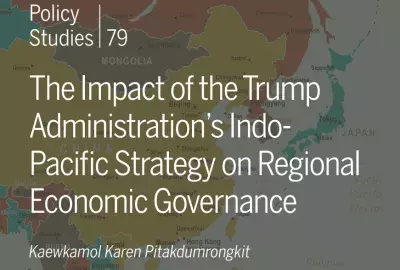Error message

China, Japan, and South Korea have regarded Central Asia as a new Asian frontier in their foreign policies since the collapse of the Soviet Union. With time, their policies evolved into regionbuilding initiatives exemplified by the Shanghai Cooperation Organization, Belt and Road Initiative, Central Asia plus Japan Dialogue Forum, and Korea-Central Asia Cooperation Forum. This paper raises the following research questions: What are the areas of interest for China, Japan, and Korea in their relations with Central Asian states and Uzbekistan in particular? What are the patterns of agenda setting in establishing intergovernmental cooperation? What are the particular projects that these states initiate? What are the objectives of projects initiated within these areas of interest? How competitive or complementary are these projects of China, Japan, and Korea? Throughout, Chinese, Japanese, and Korean “Silk Road” roadmaps with Uzbekistan are discussed to highlight their similarities and differences.
About the author
Timur Dadabaev is an associate professor and the director of the Special Program for Japanese and Eurasian Studies at the Faculty School of Social Sciences and Humanities, University of Tsukuba, Japan.
He has published with Communist and Post-Communist Studies, The Pacific Review, Nationalities Papers, Journal of Contemporary China, Asian Survey, Inner Asia, Central Asian Survey, Asian Affairs, Strategic Analysis, and others. His latest works are Identity and Memory in Post-Soviet Central Asia (Oxon: Routledge, 2015) and Japan in Central Asia: Strategies, Initiatives, and Neighboring Powers (NY: Palgrave Macmillan, 2016).
China, Japan, and South Korea have regarded Central Asia as a new Asian frontier in their foreign policies since the collapse of the Soviet Union. With time, their policies evolved into regionbuilding initiatives exemplified by the Shanghai Cooperation Organization, Belt and Road Initiative, Central Asia plus Japan Dialogue Forum, and Korea-Central Asia Cooperation Forum. This paper raises the following research questions: What are the areas of interest for China, Japan, and Korea in their relations with Central Asian states and Uzbekistan in particular? What are the patterns of agenda setting in establishing intergovernmental cooperation? What are the particular projects that these states initiate? What are the objectives of projects initiated within these areas of interest? How competitive or complementary are these projects of China, Japan, and Korea? Throughout, Chinese, Japanese, and Korean “Silk Road” roadmaps with Uzbekistan are discussed to highlight their similarities and differences.
About the author
Timur Dadabaev is an associate professor and the director of the Special Program for Japanese and Eurasian Studies at the Faculty School of Social Sciences and Humanities, University of Tsukuba, Japan.
He has published with Communist and Post-Communist Studies, The Pacific Review, Nationalities Papers, Journal of Contemporary China, Asian Survey, Inner Asia, Central Asian Survey, Asian Affairs, Strategic Analysis, and others. His latest works are Identity and Memory in Post-Soviet Central Asia (Oxon: Routledge, 2015) and Japan in Central Asia: Strategies, Initiatives, and Neighboring Powers (NY: Palgrave Macmillan, 2016).







